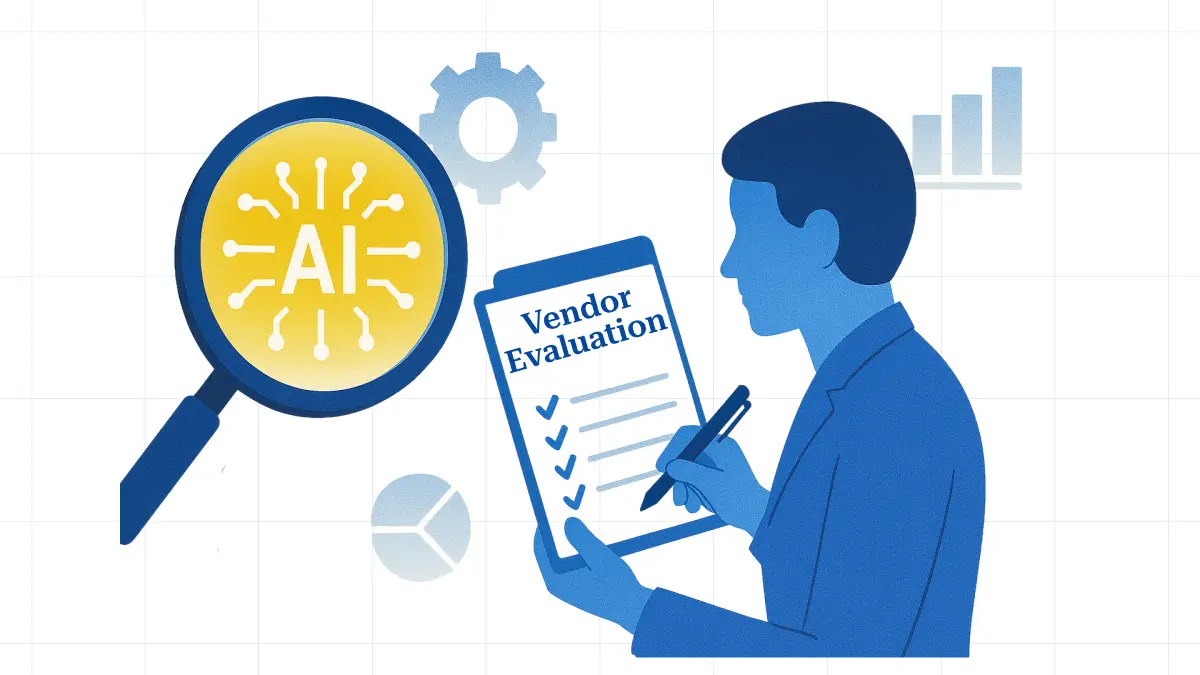Beyond the Hype: A Guide for HR Leaders on Buying AI
Beyond AI hype: A practical guide for HR leaders to buy smart, start with strategy, and demand ethics.

The pressure is on.
Every HR conference, webinar, and trade publication is buzzing with the transformative promise of Artificial Intelligence aka AI.
Vendors promise that AI will solve everything from talent acquisition woes to employee engagement slumps.
The hype is deafening, and the fear of falling behind is real.
But here’s the unvarnished truth: a successful AI investment doesn’t start with dazzling software or slick demos.
It begins with a clear, well-defined business problem.
Rushing to buy the latest AI-powered tool without a strategy is like buying a state-of-the-art engine without a car to put it in.
This guide will provide a practical framework for HR leaders to cut through the noise, focusing on a problem-first approach, a rigorous vendor evaluation process, and the non-negotiable importance of ethical governance.
AI in HR Today
with Anthony Onesto
Subscribe for exclusive insights from Anthony Onesto, Chief People Officer at Suzy, and learn how AI is reshaping HR, enhancing employee engagement, and driving business success.
TOGETHER WITH
Start with Strategy, Not Software
Before you even think about scheduling a vendor call, look inward.
The most critical first step is to pinpoint a specific, high-impact pain point within your organization.
The mantra should be: strategy before software.
Resist the temptation of "AI for AI's sake."
Instead of asking "What can we do with AI?", ask "What is our biggest HR challenge, and could AI be part of the solution?"
The best way to begin is by starting small with a single, measurable pilot use case.
This allows you to test the technology, learn from the process, and demonstrate value without a massive upfront investment.
My Examples:
- Recruiting - if your talent acquisition team is buried under a mountain of resumes and struggling to meet time-to-hire goals, an AI-powered screening tool could be a game-changer. The goal isn't just to automate; it's to free up recruiters' time so they can focus on engaging with top candidates.
- HR Operations - is your HR team spending countless hours answering the same repetitive questions about benefits, payroll, or company policies? An AI assistant or chatbot can provide instant, 24/7 answers, dramatically reducing the administrative burden and improving the employee experience.
- Performance/Engagement - does it take forever to conduct performance reviews and engagement, then when they are done, you have a bunch of data and no real insights? Look to solutions that make the workflows easier, combine systems, and provide insights that seem to be effortless.
Finally, take a hard look at your internal readiness.
If your employee data is messy, inconsistent, or siloed across different systems, your AI will be ineffective at best and biased at worst.
Assess the quality of your data and the skills of your team.
You may need to invest in data cleanup or upskilling before you're truly ready for an AI implementation.
A Framework for Vendor Evaluation
Once you have a clear use case, you need a standardized framework to compare vendors objectively.
This isn't about finding the vendor with the flashiest user interface; it's about finding a true partner who aligns with your strategic goals and ethical standards.
Here are the key evaluation criteria that should be on your checklist:
- Integration and Compatibility - your HR technology should be a seamless ecosystem, not a collection of disconnected islands. Ensure any new AI tool integrates smoothly with your existing Human Resource Information System (HRIS), Applicant Tracking System (ATS), and Learning Management System (LMS). Be aware of systems that are data silos and make it a difficult employee experience and a dumb database.
- Data Security and Privacy - you are the custodian of sensitive employee data. Protecting it is non-negotiable. The vendor must demonstrate robust security protocols and compliance with regulations like GDPR, ISO and SOC. Ask tough questions about where your data is stored, who has access to it, and how it's protected from breaches. See the recent Workday breach.
- Ethical AI and Transparency - this is where the rubber meets the road. The AI cannot be a "black box." A credible vendor must be able to explain, in simple terms, how their algorithms work. They need to show you how they actively test for and mitigate bias in their systems. If a vendor can't or won't explain their methodology, walk away.
- Human-in-the-Loop - the purpose of AI in HR is to augment human intelligence, not replace it. The system must be designed to support human decision-making. For critical decisions, like hiring or promotions, the final call must always be made by a person, informed by AI-driven insights, not dictated by them. Be careful here as many states are passing laws about algorithmic decisions around hiring, firing, promotion and compensation.
Asking the Right Questions
During demos, move beyond the scripted presentation. Arm yourself with direct, powerful questions that get to the heart of a vendor's capabilities and ethics. For instance:
"Can you provide a complete, auditable trail for an AI-generated hiring recommendation and explain every factor that contributed to that output?"
This single question cuts through the marketing fluff and forces the vendor to demonstrate true transparency.
The strategic path to buying AI in HR is clear: define the problem first, evaluate vendors with uncompromising rigor, and never waver on your commitment to ethics and transparency.
AI in HR Today
with Anthony Onesto
Subscribe for exclusive insights from Anthony Onesto, Chief People Officer at Suzy, and learn how AI is reshaping HR, enhancing employee engagement, and driving business success.
